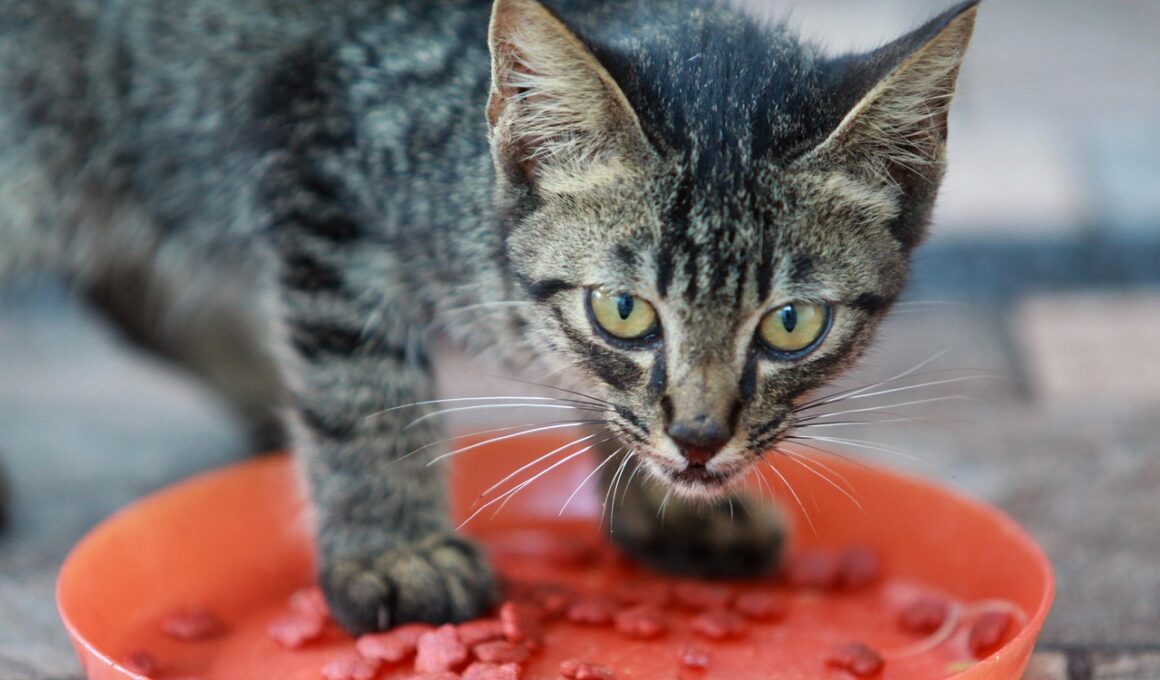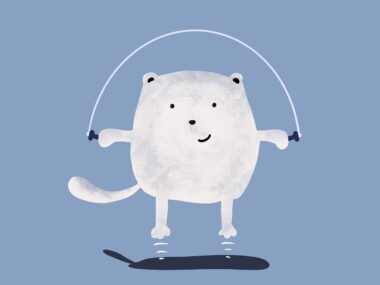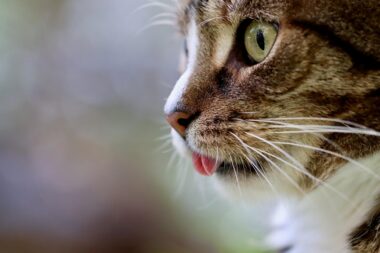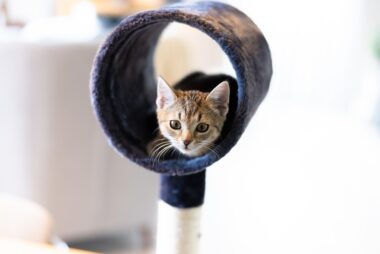Effective Weight Loss Programs for Obese Cats: What Works?
Maintaining a healthy weight is vital for your cat’s overall well-being, especially if they’re overweight. Obesity can lead to numerous health issues in felines, including diabetes, joint problems, and decreased lifespan. Thus, understanding how to effectively manage a cat’s weight is essential for any responsible cat parent. The first step in this journey is recognizing the signs of obesity in your cat. You should monitor their body shape, weight, and eating habits. A vet can help assess your cat’s condition accurately. Furthermore, you can explore different ways to initiate a weight-loss program. Often, these programs incorporate a balanced diet and increased exercise. It is crucial to determine how many calories your cat requires daily, so consulting a vet is a smart move. Cats require high-quality protein in their diet to maintain muscle mass while losing fat. Gradually adapting your cat’s eating habits and exercise routine will yield the best results. Always ensure any changes you implement are as comfortable as possible for your furry companion.
Your cat’s age and health conditions are significant factors in planning their weight-loss journey. For adult cats, the process may differ slightly from kittens or senior felines. Older cats may require different nutritional content due to possible health ailments. If your cat is experiencing joint discomfort, you might consider adjustments to their exercise routine. Regular check-ups with the vet are essential during this time, allowing you to track your cat’s progress effectively. Weight loss should be gradual; sudden changes can be harmful to their health. Healthy weight reduction usually ranges from 0.5 to 2% of body weight weekly. To monitor your cat’s well-being, maintain a progress log or chart. Always adjust food portions to meet weight-loss goals by reducing caloric intake without compromising nutrition quality. If you suspect your cat’s diet isn’t adequate, consider switching to a vet-recommended diet specifically designed for weight control. Incorporating low-calorie treats, such as frozen green beans or carrots, can be an excellent way to fill them up without overloading on calories. Engaging in playtime and interactive feeding can also make a significant difference.
The emotional aspect of your cat’s weight loss program cannot be overlooked. Obesity can result from emotional eating, which is often the response to stress or boredom. Therefore, ensuring your cat receives plenty of mental stimulation is crucial. Providing various toys and activities to keep them entertained will prevent overeating due to boredom. You can engage your cat with puzzle toys that dispense treats as they play. Another strategy is implementing regular play sessions using feather wands, laser pointers, or catnip-infused toys. Playing with your cat daily not only burns calories but also strengthens your bond. Cats love to explore, so creating an environment that encourages curiosity—like cat trees or climbing shelves—also helps promote physical activity. However, it is essential to keep the play sessions short and enjoyable to avoid overstressing your furry friend. Repetition and structured routines will allow your cat to anticipate playtimes, making them more enthusiastic about engaging. This combination of stimulating toys and interactive play not only supports weight loss but enriches your cat’s daily life, leading to a happier pet.
Dietary adjustments are critical when working on your cat’s weight management. Transitioning to a weight-loss diet should be done gradually over at least a week. Start by mixing the new food with the old, slowly increasing the proportion of the new food each day. Most cats are sensitive to sudden changes in diet, which can lead to gastrointestinal upset. Ideally, the diet should focus on high protein, low carbohydrate content. Always check the labels for overall nutritional adequacy and use the serving size as a guide tailored to your cat’s current weight goal. Consult your veterinarian for recommendations on quality weight-loss cat foods available on the market. You can also try scheduled feedings instead of free feeding to limit their caloric intake. Dividing daily portions into smaller meals can prevent huge hunger spikes that may result in overeating. Always watch the body condition score and adjust as needed. Maintaining a routine during meal times, including using measuring cups to serve precise amounts, teaches your cat to anticipate feeding times without the temptation of unrestricted access to food.
The Role of Treats
Treats are often a significant part of a cat’s diet; thus, being strategic about them can aid in weight management. When the goal is weight loss, consider the caloric content of treats. It’s beneficial to limit commercial treats, as they can be calorie-dense and unhealthy. Always seek to find healthy alternatives, such as small amounts of plain cooked chicken or fish. You can also freeze small pieces of fruits like watermelon, which can make for a refreshing low-calorie treat. Additionally, monitoring treat portions is vital; even when using healthy options, overindulgence can hinder weight-loss progress. A good rule of thumb is to account for treats as part of their total daily caloric limit. Furthermore, consider employing positive reinforcement to encourage desired behaviors in ways that don’t involve food. Simple praise, petting, and playtime can be equally rewarding for your cat. The ultimate goal is to ensure that treats enhance your cat’s happiness without contributing to their obesity. These strategies will help maintain a balance between enjoying treats responsibly while keeping their health in mind.
Involving the entire household in your cat’s weight loss journey is paramount. It’s essential to ensure that everyone who interacts with your cat understands the importance of adhering to the established plan. Shared responsibility means everyone will be on the same page about feeding schedules and treat allowances. Discussing your goals and strategies with family members will promote uniformity in your cat’s care. For multi-pet households, this might also mean that you need to segregate feeding times or areas to prevent overeating by the cat on a weight-loss plan. You could employ feeding schedules that align with your cat’s weight management goals, emphasizing that treats should be limited strictly to what’s been agreed upon. If your cat has been particularly obedient, lavish them with verbal praise rather than food rewards. Creating an environment where everyone is invested in your cat’s health will lead to a better chance of success in achieving the desired weight-loss outcomes. Keeping track of their progress and celebrating small victories together nurtures a supportive atmosphere, reinforcing the importance of healthy habits for all.
Consulting the Vet
Finally, ongoing communication with your veterinarian is crucial throughout this process. Your vet can provide insights into your cat’s health status and recommend adjustments to the weight loss program as needed. Regular check-ups allow for monitoring any potential complications due to rapid weight loss. Moreover, your vet can conduct health evaluations to ensure that your cat is losing weight at a safe and reasonable rate. Should any weight loss plateau occur, your veterinarian can recalibrate the dietary plan to help move forward. Sometimes, diagnosing underlying health issues that might contribute to weight gain becomes necessary. This approach guarantees not only effective weight management for your obese cat but promotes their overall health. It is also wise to prepare for long-term weight management strategies that ensure sustained success after the initial weight loss. Keeping your cat’s ideal weight in mind for the future will prevent relapses in unhealthy weight gain. Working closely with veterinary professionals will help equip you with the knowledge needed to maintain your cat’s health effectively.
In conclusion, addressing feline obesity requires a holistic approach involving diet, exercise, emotional support, consistency, teamwork, and professional guidance. All these factors will come together to create a sustainable weight-loss program for your beloved pet. Remember that patience and ongoing commitment will yield the best results over time. Moreover, a healthy cat is a happy cat, reducing the likelihood of serious health problems down the line. A well-planned weight loss program, tailored to your cat’s specific needs, encourages a healthier lifestyle that can substantially improve their quality of life. Set realistic goals and celebrate small victories, as each step forward is significant. You are not just altering their diet or increasing their activity levels; you are also enhancing their life, fostering a deeper connection in your relationship. Changing habits takes time, and be aware there may be bumps along the way. Nevertheless, focusing on a balanced and enjoyable journey for your cat ensures they enjoy a better, healthier future. Both you and your furry friend will undoubtedly benefit from the enriching experience of a healthier lifestyle.





